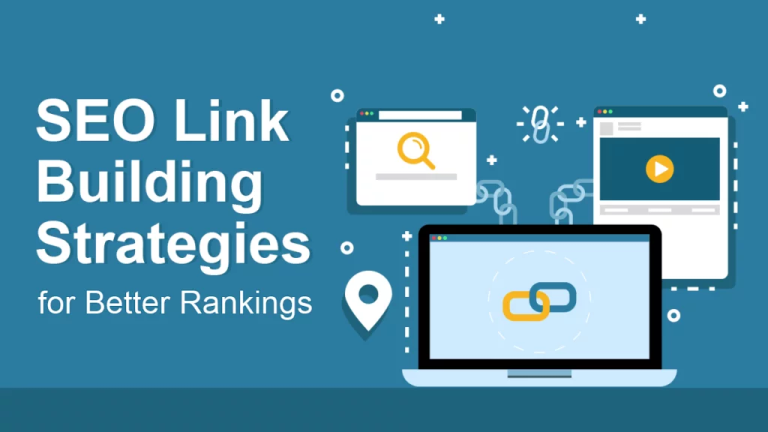How to Optimize Content for SEO?
In the competitive digital landscape, mastering how to optimize content for SEO is paramount for online success. Effective SEO strategies enhance visibility, drive traffic, and elevate brand authority. By meticulously crafting content that aligns with search engine algorithms and user intent, businesses can unlock their full potential in the digital realm. From keyword research to on-page optimization and link building, every aspect plays a crucial role in achieving top rankings. This guide explores key techniques and best practices to empower businesses in optimizing their content for maximum search engine visibility and sustained success in the ever-evolving online landscape.
Table of Contents
How to optimize content for SEO
Make sure you’re targeting a keyword with traffic potential
Ensure you’re targeting keywords with significant traffic potential to maximize the visibility and reach of your content. Conduct thorough keyword research using tools like Google Keyword Planner or SEMrush to identify relevant terms with high search volumes. Focus on long-tail keywords that reflect user intent and have lower competition, increasing the likelihood of ranking well in search results. By selecting the right keywords to target, you can attract more organic traffic to your website and improve your overall SEO performance. Always prioritize keywords that align with your content and target audience to achieve the best results.

Make sure it aligns with search intent
Ensure your content aligns with the search intent of users by understanding their underlying motivations and goals when conducting a search. Analyze the types of queries users are likely to have and tailor your content to address their needs effectively. Whether it’s informational, transactional, or navigational intent, your content should provide valuable information or solutions that align with what users are looking for. By aligning your content with search intent, you can increase user satisfaction, reduce bounce rates, and improve your chances of ranking higher in search results, ultimately driving more traffic to your website.
Make sure it covers everything searchers want to know
Ensure your content comprehensively covers all aspects of the topic to satisfy the information needs of searchers. Conduct thorough research to identify common questions, concerns, and interests related to the topic. Address these points in your content, providing detailed explanations, examples, and relevant information. By covering everything searchers want to know, you not only improve the user experience but also increase the likelihood of your content being deemed valuable by search engines. This can lead to higher rankings in search results and ultimately drive more organic traffic to your website.
Make sure it’s easy and enticing to read
Ensure your content is easy and enticing to read by using clear and concise language, short paragraphs, and bullet points to break up text. Incorporate engaging headings, subheadings, and visuals to enhance readability and keep readers engaged. Avoid jargon and overly technical language, and instead, aim for a conversational tone that resonates with your target audience. By making your content accessible and appealing to readers, you increase the likelihood of them staying on the page longer, reducing bounce rates, and improving overall user experience. This can positively impact your SEO efforts and help your content rank higher in search results.

Make sure it has a compelling title tag and description
Ensure your content has a compelling title tag and description that accurately reflect the content’s value and relevance to users. Craft titles that are concise, descriptive, and keyword-rich, capturing the essence of your content in a compelling way. Likewise, write meta descriptions that entice users to click through by highlighting the benefits or key points of your content. By creating compelling title tags and descriptions, you increase the likelihood of attracting clicks from search users, improving your click-through rate (CTR), and ultimately boosting your content’s visibility and rankings in search engine results pages (SERPs).
Make sure it has enough backlinks
Ensure your content earns enough high-quality backlinks from authoritative websites to enhance its credibility and visibility in search results. Implement link building strategies such as guest blogging, creating shareable content, and reaching out to industry influencers for collaborations. Focus on acquiring backlinks from relevant and reputable sources within your niche to maximize their impact on your content’s SEO performance. By building a strong backlink profile, you not only improve your content’s authority and trustworthiness but also increase its chances of ranking higher in search engine results pages (SERPs) and driving organic traffic to your website.
Make sure you’re eligible for rich snippets
Ensure your content is structured and formatted in a way that makes it eligible for rich snippets, enhancing its visibility in search results. Utilize schema markup to provide search engines with additional context about your content, increasing the likelihood of it being featured as a rich snippet. Optimize your content to answer common user queries concisely and informatively, increasing its chances of being selected for featured snippets. By optimizing for rich snippets, you can improve your content’s click-through rate and visibility in search results, ultimately driving more organic traffic to your website.
Try to win the featured snippet
Strategically structure your content to increase the chances of winning the featured snippet spot in search results. Identify commonly asked questions related to your topic and provide clear, concise answers in your content. Use headers, lists, and tables to organize information for easy scanning by search engines. Optimize your content for voice search queries, as featured snippets often appear in voice search results. By aiming to win the featured snippet, you can increase your content’s visibility and drive more organic traffic to your website, establishing your brand as an authoritative source in your niche.

Make sure your pages aren’t sluggish and offer good UX
Ensure your website pages load quickly and provide a smooth user experience (UX) to enhance SEO performance. Optimize images and videos to reduce page load times, and utilize caching and content delivery networks (CDNs) to improve website speed. Streamline navigation and layout for easy accessibility on various devices, enhancing overall user experience. By prioritizing fast-loading pages and providing a seamless user experience, you reduce bounce rates, increase engagement, and improve search engine rankings, ultimately driving more organic traffic to your website. A positive user experience also fosters trust and encourages repeat visits, contributing to long-term SEO success.
Conclusion
In the competitive digital landscape, mastering how to optimize content for SEO is paramount for online success. Effective SEO strategies enhance visibility, drive traffic, and elevate brand authority. By meticulously crafting content that aligns with search engine algorithms and user intent, businesses can unlock their full potential in the digital realm. From keyword research to on-page optimization and link building, every aspect plays a crucial role in achieving top rankings. This guide explores key techniques and best practices to empower businesses in optimizing their content for maximum search engine visibility and sustained success in the ever-evolving online landscape.
Read More 7 Easy Ways to Improve Your Google My Business Ranking
FAQ’S
Why is SEO important?
SEO is crucial for driving organic traffic to websites, increasing brand visibility, and improving online presence.
How does SEO work?
SEO involves optimizing website content, improving site structure, and building quality backlinks to rank higher in search results.







